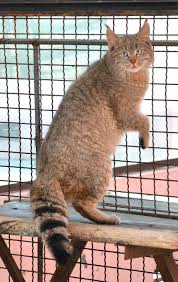
Originally from Spain, the Alano Espaňol has a large head, with a short muzzle and a very large nose. Since it is a strong breed, with thick skin and short hair, it was once used in Spanish bullfights.
But before that, due to its sturdy appearance and determination to obey its owners orders, the Alano was first used by shepherds in Spain as a guardian and pursuit dog. However, as the activities it was used in started to vanish or be banned, as was bullfighting, the Spanish Bulldog's existence began a descending trend and the breed was feared to be extinct by 1963. Only the strong will and thoroughness of a group of veterinary students who engaged in a campaign to find the last Alano Espaňol dogs in Spain in the 70s was able to spark life again in this old breed.
Despite its firm and robust appearance, this dog turns out to be very loyal and affectionate with the family it lives with, proving kindness and even patience with children. It does indeed have a dominant temperament, but this is counterbalanced by its positive response to following orders and its ability to refrain from attacking unless challenged. If involved in a fight, it will stay at the throat of its opponent disregarding any pain it may suffer, until his master tells him to let go. As a matter of fact, the Alano Espaňol has become famous for its strong grip of the prey and for its ability to hold on to it until its master tells him otherwise.
However, as the breed is a sociable one, accustomed to being in a pack, it is friendly and playful with other dogs, if not provoked or attacked.
Due to its strong temperament and high pain threshold, the dog requires a strong and determined master that understands canine behaviour and knows how to stimulate its friendly traits, while correcting any excess of aggressiveness, standing out as the leader of the pack.
The Spanish Bulldog does not fit very well indoors, although it is one of the very few breeds of molossers that does not snore or drool and is a moderate shedder. Puppies can be troublemakers though, as they chew whatever falls in their paws. Furthermore, the need of this breed to take long walks and make a lot of exercise does not recommend it for a life indoors, but rather for having its own garden in which to play and run.
Hard working and adjustable to various temperatures, the dogs of this breed are generally healthy and, if sick, easily curable.
It is not easy to own an Alano Espaňol - but if you have minimum knowledge about training dogs, you will find a perfect learner with a strong yet balanced personality, able to protect you, hunt for you and equally play harmlessly with your children.




